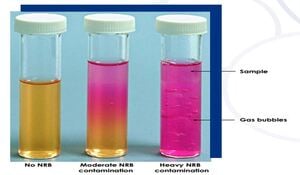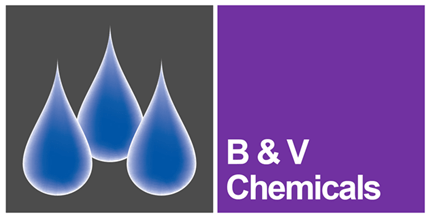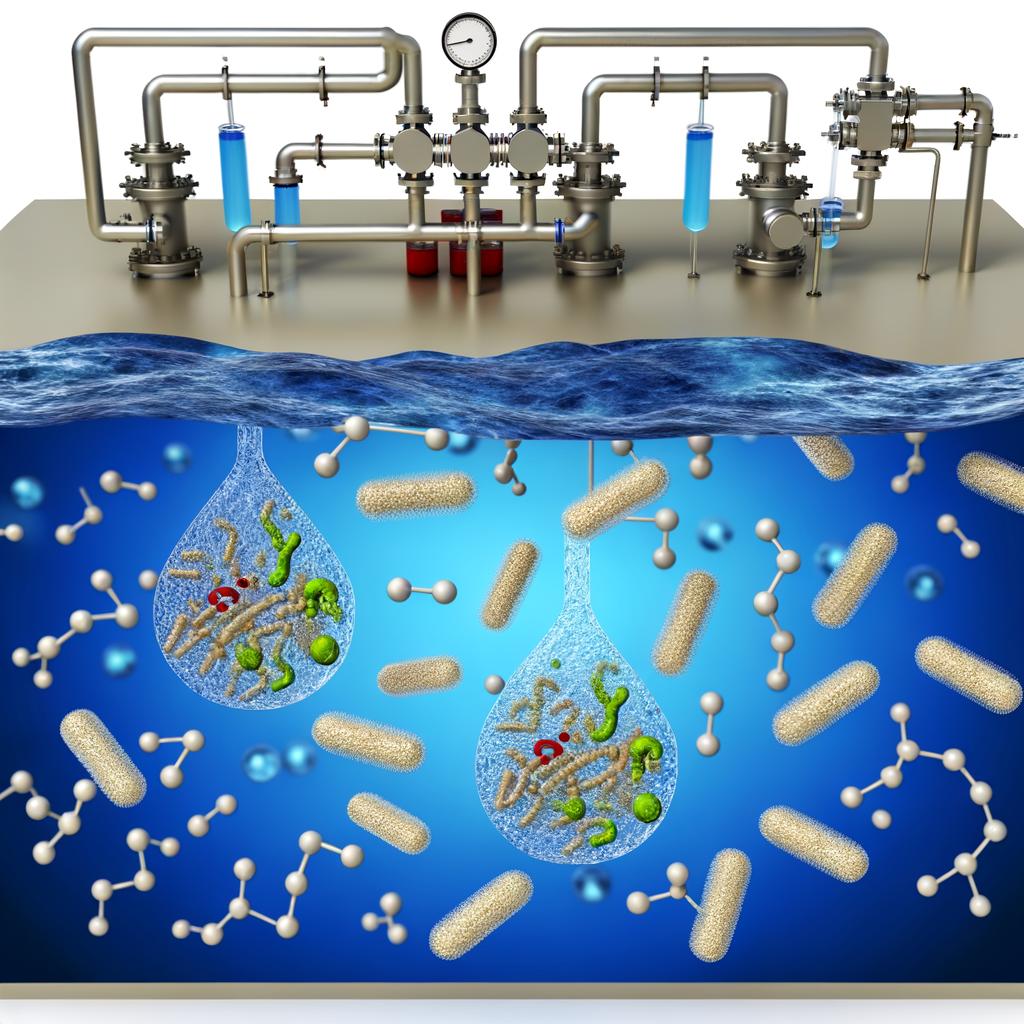Nitrite is commonly used in closed circuit inhibitors to protect iron-based metals from corrosion. It acts as an anodic corrosion inhibitor, functioning even without dissolved oxygen. However, it is susceptible to degradation by bacteria, particularly in chilled loops where bacterial growth is more prevalent due to lower temperatures. This degradation can pose a significant issue in chilled loops but also in systems that remain inactive for extended periods, such as LPHW systems during hotter weather.
Due to the high cost of molybdate, nitrite is often the preferred and cost-effective option for controlling mild steel corrosion. Nitrite concentrations ranging from 600 to 1200 ppm as NO2- effectively inhibit iron and steel corrosion when the pH is above 7.0. However, inadequate dosing of nitrite in nitrite only inhibitors can lead to severe pitting, emphasizing the importance of regular testing of these systems.
Blends of nitrite and molybdate are also common formulations. Molybdate, an anodic oxidizing inhibitor, requires oxygen to be effective but is enhanced in combination with nitrite, which acts as an oxidant. Depletion of nitrite in these blends therefore severely compromises corrosion inhibition.
The breakdown of nitrite by bacteria involves nitrifying bacteria oxidizing nitrite to nitrate, while denitrifying bacteria reduce nitrite to nitrogen gas or ammonia. In closed circuits with low oxygen levels, nitrifying bacteria are predominant, while denitrification is less likely as this is a strictly anaerobic process. Ammonia can on occasion be generated through denitrification and can be aggressive to yellow metals. Diligent use of a non-oxidizing biocide regime is imperative when using a nitrite program.
Air ingress presents another challenge with nitrite use, as dissolved oxygen can oxidize nitrite to nitrate. In systems with significant air exposure, higher nitrite levels may be required, making microbiological control more difficult.
Analysis for Nitrite reducing bacteria
For several years, it has been standard practice to conduct tests on closed circuits for Total Viable Count (TVC), Pseudomonas spp, Nitrite Reducing Bacteria (NRB’s), and Sulphate Reducing Bacteria (SRB’s). In an upcoming blog, we will delve into a comprehensive discussion on microbiological analysis for closed circuits. However, this particular blog will concentrate solely on Nitrite in inhibitor formulations.
The traditional method for testing Nitrite Reducing Bacteria (NRB's) in closed circuit systems involves observing colour changes in specific media. Typically, the media changes from yellow-orange to pink, indicating an increase in alkalinity (pH) due to the presence of ammonia. This colour shift occurs because the media contains an indicator that begins to change colour at a pH above 7.4–7.5. Since the test involves adding 2ml of closed circuit sample, often with a pH greater than 7.5, it's reasonable to suspect that this colour change may occur simply due to the sample addition. This is explained in the media manufacturer's test instructions. Some laboratories neutralize the sample before conducting this test, although this hasn't always been standard practice.
Another indication of a positive result is the formation of bubbles in the media, indicating the production of ammonia. Nitrite can be reduced to various compounds including nitric oxide, nitrogen dioxide, nitrogen, and ammonia. While the production of gas bubbles is considered a more reliable indicator of NRB presence than the colour change in the media, not all NRB species produce gas bubbles, so this may not always be entirely reliable.

Many laboratory microbiological analysis reports may indicate the presence of heavy growth or NRB’s without detecting TVC’s and Pseudomonas spp which is extremely unlikely. Such results can be even more questionable in systems where nitrite levels have not been depleted.
According to BSRIA BG50 2021 guidelines, NRB testing can be conducted either for informational purposes or as part of an investigation. However, it's essential to interpret these results alongside other parameters such as pH, nitrite levels, and TVC levels.
As discussed in a previous blog post on the impact of bacterial growth in closed circuit systems, (Impact-of-bacterial-growth-in-closed-circuit-systems) a more conclusive indication of NRB presence can be inferred based on specific conditions. For example, in a system containing our BV1721 Polyhib NU (new improved replacement product for Polyhib CH) , if the conductivity of the system is correct ie 1% Polyhib NU in DI water = 2217uS + mains conductivity, molybdate is 330ppm and nitrite is 50ppm it can be inferred that the depletion in Nitrite is due to the presence of NRB’s. In this case we would recommend the system is dosed with an appropriate biocide such as BV1528 Triacide at the correct levels and then after 5 – 7 days add supplementary neutral nitrite BV891 Polyhib HN5 to bring the nitrite levels back to optimal levels. As stated previously in a nitrite / molybdate inhibitor both components need to be present at at least the minimum levels recommended levels in order to achieve optimal corrosion inhibition.
For further details on closed circuit water treatment inhibitors and biocides, please feel free to contact us at ownlabel@bvwater.co.uk.





